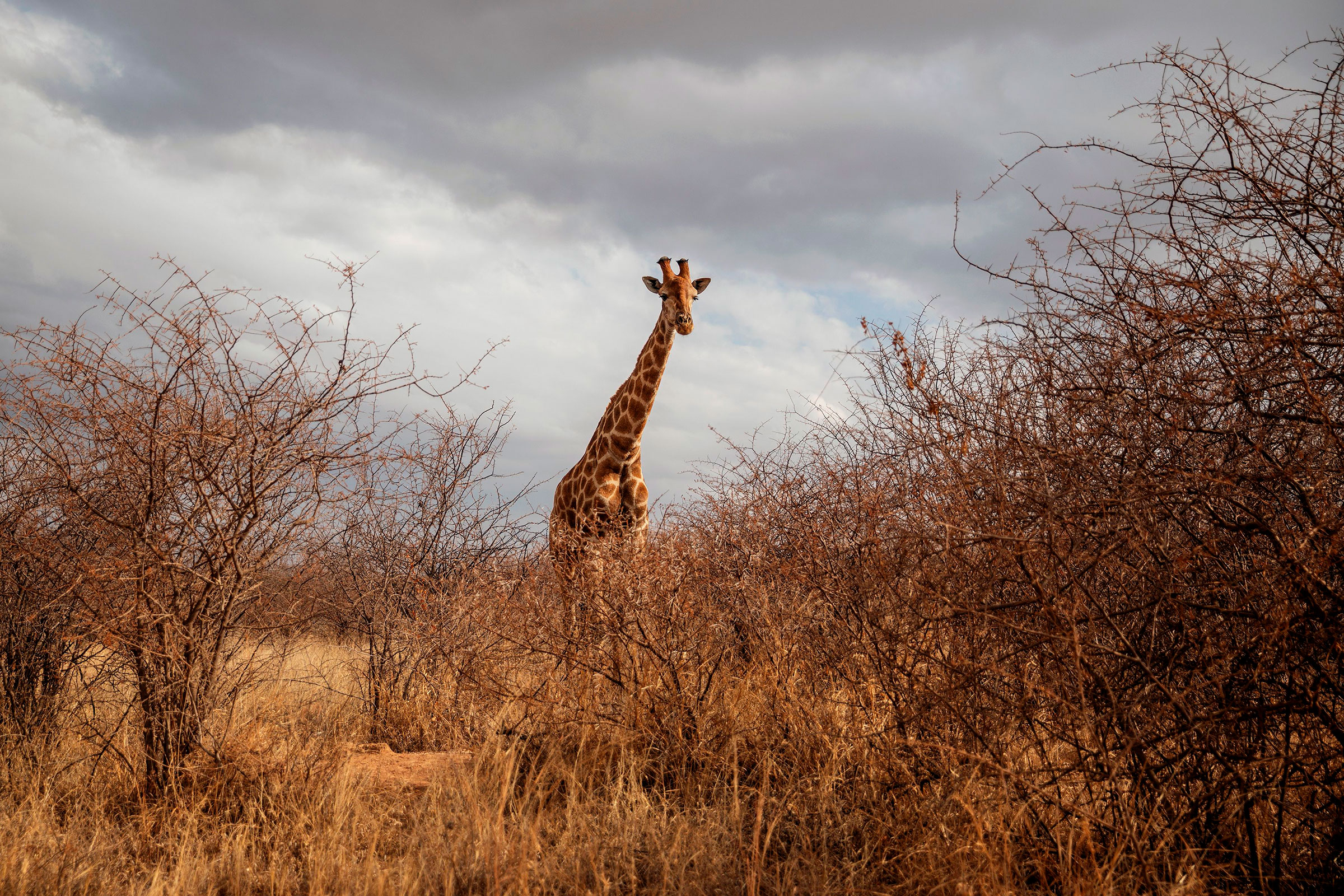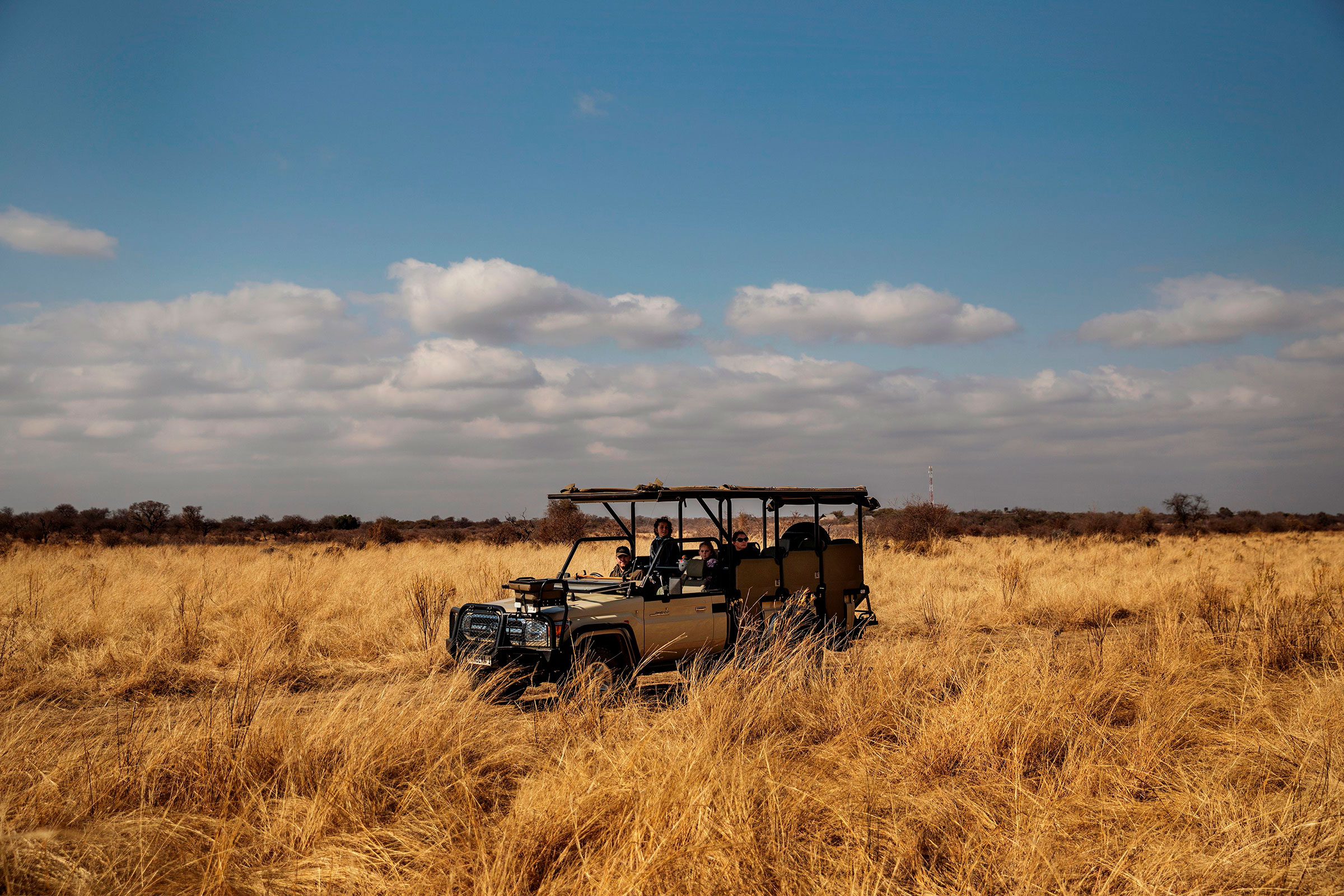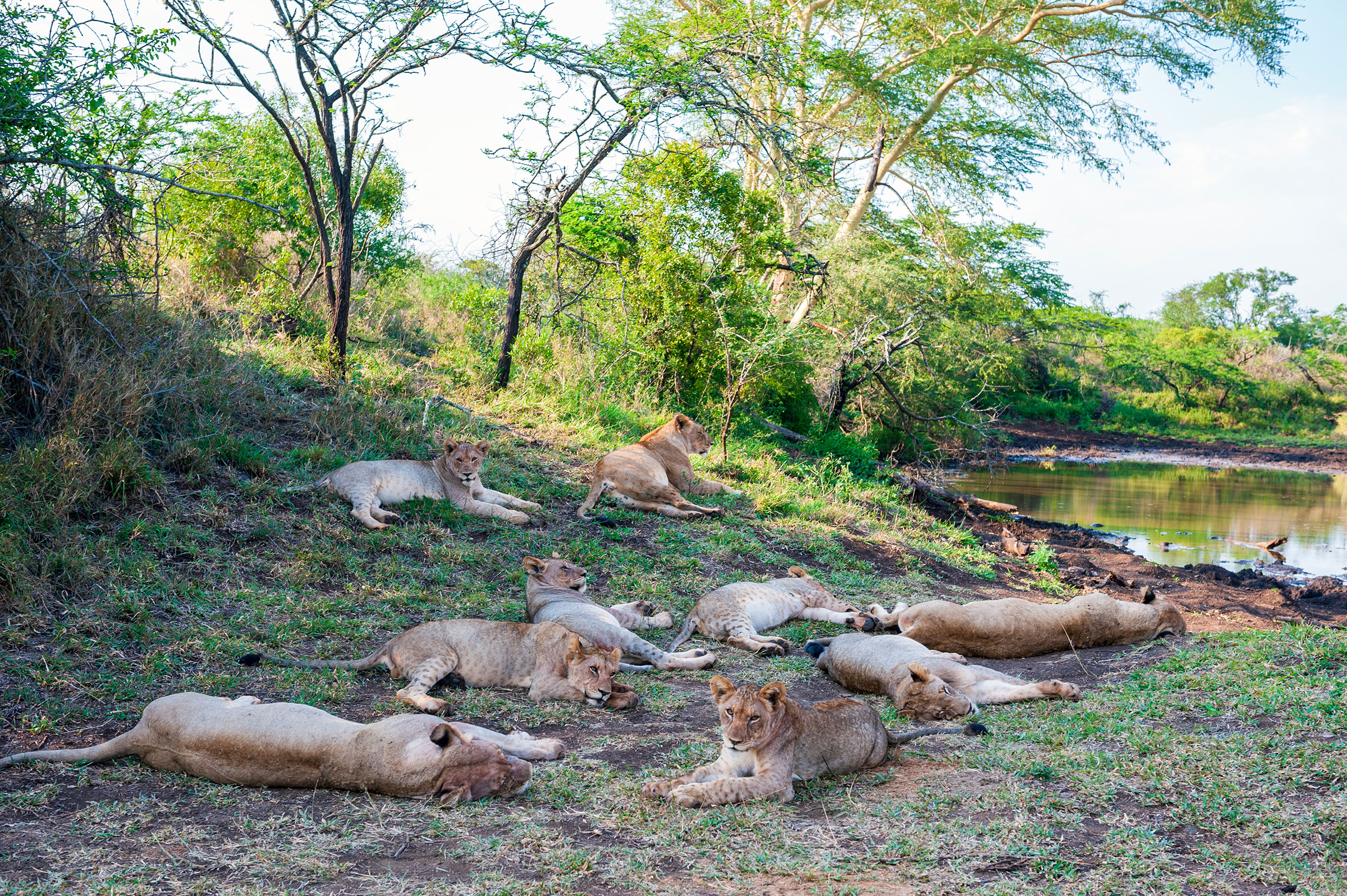On March 26, as South African President Cyril Ramaphosa announced that he was closing the country’s borders and shutting down tourism to help curb the spread of COVID-19, Kayla Wilkens thought of only one thing: How was she going to feed the elephants?
Wilkens, the general manager of the privately-owned Fairy Glen safari resort, about 115 km outside of Cape Town, knew that the park’s budget depended on tourism. Without that income, taking care of the lions, rhinos, zebras and antelope that populate the 500-hectare reserve would be difficult. That night, Wilkens, an avid conservationist who can tell the arrival or birth story of almost every animal on the property in loving detail, sat down with her partner and Fairy Glen owner, Pieter De Jager, to map out the future.
If they gave up their own salaries, laid off all but two of their 30 staff, stopped the security patrols and put off repairs, they figured they just might make it a couple of months. Her entire life savings would buy them enough food and supplies for a further month, if they didn’t need to bring in the vet. After that though, they would have to prepare for the worst. “We had to force ourselves to think about maybe having to put down our animals rather than let them starve to death,” she says, her voice cracking at the thought. “We can’t just put them outside and expect them to look after themselves.”
The elephants, rhinos, buffalos, lions and leopards that make up the classic safari “Big Five” checklist may be wild animals, but in South Africa’s private game reserves, the illusion of wilderness is built upon a scaffold of costly maintenance. Reserve managers spend several hundreds of thousands of dollars a year to buy, feed, breed, care for and protect the animals in their parks, money that they recoup through safari drives and luxury accommodations on the property. It is a privatized form of conservation that not only keeps endangered species alive, but also guards vast tracts of biodiverse wilderness from development. The precipitous drop in tourism has brought many of South Africa’s 500 or so private game parks to their knees, according to a survey conducted by a local tourism agency, which reported that some 90% of safari-related businesses believed they would not survive even if international borders opened immediately.

A crisis of animal welfare
Africa’s great national parks, such as South Africa’s Kruger, Kenya’s Masai Mara, or Tanzania’s Serengeti that are the safari qua non of African destinations, are equally at risk. For decades African governments have resisted calls for the exploitation of wilderness areas because conservation and tourism promised to be even more long-lasting and lucrative. According to the World Travel and Tourism council, wildlife-based tourism in Africa is worth approximately US$71 billion a year. Now, with safaris at a standstill, funding for both private and public reserves is drying up, even as they face the ongoing expense of keeping their animals alive. A survey of over 340 tour operators in southern and eastern Africa conducted by the online safari travel platform Safaribookings.com in August reported at least a 75% drop in income over the past six months.
“Spending by safari tourists is the single biggest funder of conservation in Africa,” says Kenya-based conservationist Max Graham, the founder of Space For Giants, an international charity that protects Africa’s elephants and their landscapes. “That money has disappeared, leaving everyone struggling to pay wildlife rangers, maintain security, or support community programmes. People who lose jobs or whose small businesses collapse could turn to farming or bushmeat hunting to make ends meet, accelerating the loss of biodiverse natural habitats and driving the illegal wildlife trade.”
In the short term that means that veterinary care, endangered species rehabilitation programs and community education efforts have been curtailed. But if tourism numbers don’t pick up, and wildlife stops paying its way, the temptation will be to convert some of Africa’s 8,400 protected areas into more immediately lucrative enterprises, such as oil extraction, logging, mining or agriculture. Locals will be less willing to put up with the predations of lions and elephants rampaging through their fields if there is no compensation in the form of jobs and tourism revenues. “When you have lost your income because of COVID, and you depend on your vegetable patch for survival, you are not going to tolerate an elephant tearing it up,” says Jake Rendle-Worthington, an animal psychologist who runs a small elephant rehabilitation program near Zimbabwe’s Victoria Falls. Police in his area have reported the deaths of several wild elephants from cyanide poisoning; just last week he found a bag of poison-laced oranges hanging from a tree not far from his elephant sanctuary.
For all the viral photos of lions lounging on empty roads and reported spikes in reproduction for animals spared the disruptive presence of safari paparazzi, the tourism slowdown heralds an animal welfare crisis for some of Africa’s most threatened species. Nowhere is that more visible than in the small private game reserves that make up the bulk of South Africa’s tourism industry, which indirectly employs some 1.5 million people and contributes 7% of GDP.
When De Jager decided to convert his family’s dairy farm into a nature reserve 20 years ago, his idea was to reintroduce the game and predators that once roamed South Africa’s Western Cape, before the area was taken over by vineyards and fruit orchards with the introduction of colonialism. Noah-like, he brought a pair of rhinos, a pair of elephants, a pride of lions and several species of antelope, along with ostriches, zebras, buffalo and a donkey into his secluded mountain paradise. His vision was to preserve as well as educate: Fairy Glen is—or was, before COVID—a regular stop for school groups from the area, and one of the few places where students can see South Africa’s iconic wildlife up close—most of the country’s game reserves are in the northeast, near Kruger park, which is either a two-hour flight or two-day drive away. But 90% of the paying visitors come from abroad, and they cover 100% of the reserve’s running costs, says Wilkens. In South Africa at least, laid off employees at privately owned reserves can apply for unemployment benefits, but that doesn’t help animals that need constant care and attention. Nor does it help with the ongoing expense of finding meat for the lions and forage for the elephants, who consume some 300kg of grass and vegetables a day.

“They are expensive animals to look after, and that doesn’t change, even in the middle of a pandemic,” says Wilkens, who says her monthly running costs easily surpass a half-million rand a month, or $30,000. As of early September, she has been able to stave off her worst case scenario. Unusually heavy rains mean there has been enough forage for the browsing animals. And when a couple of the bucks died in a bad storm, Wilkens was able to feed the carcases to the lions. A local poultry farm is donating chickens, as well.
But cutting staff numbers and security patrols has had consequences. On the night of July 27, one of the rhinos went missing. Wilkens searched the entire property and surrounding area for days, aided by police investigators and a K9 team. A week later, she had to accept that he had been stolen. But why? The rhino, known as Higgins, was something of a local celebrity: in 2011 he had been attacked and blinded by poachers who hacked out his horn with a machete, presumably to sell on the international black market, where rhino horn is nearly worth its weight in gold (or cocaine). Did poachers mistake Higgins for his mate, who was also attacked, but who still has some of her horn left? Was it some kind of revenge for laying off the staff? The experience has left Wilkens, who has a special bond with Higgins, shaken. “I can’t help but feel like we as owners have let our animals down because we couldn’t provide the security they needed because of a loss of income,” she says.
Overall, poaching for animal parts such as pangolin scales, rhino horn and elephant tusk has declined in African game reserves over the COVID period, largely due to international travel disruptions that prevent criminal syndicates from getting those products to their markets in China and Vietnam. But according to conservation organizations, killing wild and endangered animals for their meat, so called ‘bushmeat poaching,’ is on the rise. The Uganda Wildlife Authority has recorded a 125% increase in wildlife crime cases between February and May 2020, the majority of which are for bushmeat cases. Kenya’s Wildlife Service recorded a 51% increase over the same period.
The spike in bushmeat poaching, says Graham, of Space for Giants, is largely due to the collapse of wildlife tourism. When guides, rangers and resort employees no longer have the income to buy food, some will have no choice but to turn to hunting in the areas they once protected. Tumi Morema, a wildlife crimes investigator who has worked for private anti-poaching security agencies around South Africa’s Kruger Park for the past 20 years, calls it poaching “for the pot” as opposed to poaching for cash. In his area, the young men who used to find day labor jobs in town now head to the reserves in search of game. “These days, when a man comes home with meat, he’s not a thief or a poacher, he is just a hero.” Even Wilkens, at Fairy Glen, suspects that some of her antelope may have ended up as someone’s dinner. “It’s devastating for us,” she says, “but it is also understandable. They have children to feed. If I were in the same position, I most probably would do the same.”
Craig Spencer, the head warden of the semi-private, 52,000-hectare Balule Nature Reserve on Kruger Park’s western flank, says he hasn’t seen much bushmeat poaching yet, but he warns that if the economy doesn’t rebound quickly it is just a matter of time. In 2013 Spencer founded the all-women Black Mambas anti-poaching team, which combines community education with boots on the ground presence patrols that have been instrumental in protecting the reserve’s rhinos and other animals. He worries that once bushmeat poaching takes root, it could be even harder to eradicate, with long term consequences for wildlife. “With rhinos, we are fighting proper criminals. But as soon as it becomes a subsistence level thing, you have a robin hood syndrome, and you can’t stop it. The police will be sympathetic, the courts will be sympathetic, and gangs of bushmeat poachers will sell it in the community, and the people will have to buy from them.”
Bushmeat poaching for survival is unlikely to threaten whole species, but as a practice, it could contribute to the very factors that launched the pandemic in the first place, setting humanity up for a new cycle of viral outbreaks, says Graham. “It’s important to note here that it’s people over-exploiting natural environments—logging, farming, bushmeat trading—that caused the jump from animals to humans of diseases like COVID-19, SARS, and Ebola.” One of the leading theories of COVID-19 is that it originated in bats, then jumped to pangolins (small, reptile-like mammals) before infecting humans. Pangolins, whose scales are sought after for use in traditional Chinese medicine, are the most widely trafficked animal in Africa.

‘I can’t keep this up.’
As lockdown restrictions eased, there were signs of light at the end of the tunnel for safari park operators. On August 15, five months after he implemented one of the strictest lockdowns in the world, President Ramaphosa announced that while international visitors are still banned, domestic leisure travel would be permitted, including guided tours in open safari vehicles. But domestic tourists are unlikely to make up the difference for venues that largely cater to foreigners. Once-in-a-lifetime safari packages at private reserves can range from $200 to $1800 a day, per person, far beyond the reach of most South Africans, especially in the worst economy the country has ever seen.
Spencer, of the Black Mambas, has already pivoted to alternate sources of funding, spending most of his days canvassing for donations from international supporters. A German NGO has promised to cover his veterinary bills, and an Australian zoo is helping with salaries. But there is little left for other expenses. Members of the anti-poaching patrol, who live on site for their fortnightly rotations, are down to a food budget of $57 a week, for a team of six. “I can’t keep this up,” says Spencer. “It’s not sustainable to be begging money here there and everywhere.”
COVID-19 has exposed a serious flaw in conservation’s funding strategy, says Graham, pushing wildlife managers to accelerate existing moves to diversify away from tourism. “There are many ways to fund conservation without the need for a single safari tourist to visit,” he suggests, listing carbon offsets, wildlife bonds, and endowments as alternatives. Large parks like Kruger and Masai-Mara are carbon sinks as much as they are biodiversity reserves, he says. Increasing numbers of large companies are committing to offset their carbon emissions through forest protection and regeneration, and wildlife reserves could be the first to benefit. “Carbon conservation could be their future.”
Spencer is not so sure it will be enough. “I agree that all of our eggs were in this one basket called tourism, and we realize now how fragile that economy was, but if we are going to start talking about alternatives, then the landscape might be subjected to death by a thousand cuts.” Setting up reserves as carbon capture zones without a focus on animal welfare —or even human welfare—could lead to other emissions reduction goals which might see the installation of wind turbines or solar panels that would be just as destructive to wild animals. Tourism at least preserved the landscape, he says, because even as tourists expect luxury, they demand a facade of true wilderness, no matter what goes on behind the scenes to keep it up.
Still, Spencer adds, the past few tourist-free months have been a blessing in disguise for wildlife. The rhinos are breeding, he says, and so too are the hyenas. Without the constant pressure of on the landscape, the animals have regained a sense of freedom he hasn’t seen for decades. “It’s like they own the place again,” he says. “If we could find a way to run these national parks without the need for this mass tourism intervention, it would be obviously ideal, but I don’t think that is doable. I think we need the tourism, whether we like it or not.”
More Must-Reads from TIME
- Cybersecurity Experts Are Sounding the Alarm on DOGE
- Meet the 2025 Women of the Year
- The Harsh Truth About Disability Inclusion
- Why Do More Young Adults Have Cancer?
- Colman Domingo Leads With Radical Love
- How to Get Better at Doing Things Alone
- Michelle Zauner Stares Down the Darkness
Contact us at letters@time.com